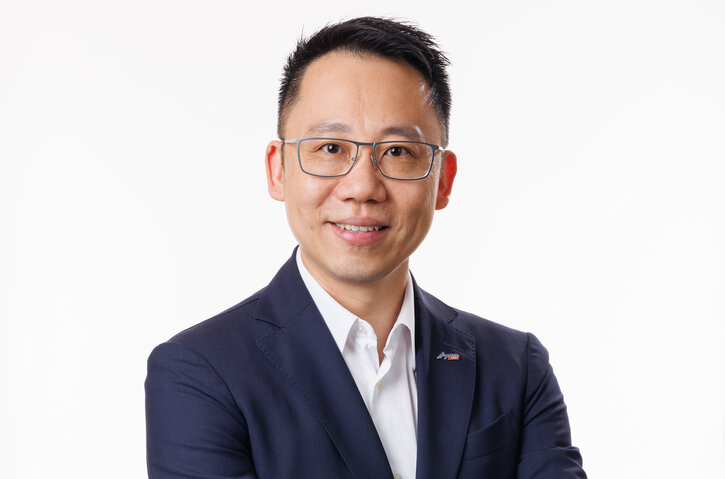In March 2024, Singapore Post (SingPost) concluded a strategic review of the group, which highlighted the transformation of the company from a postal organization to a ‘technology-driven international logistics enterprise focused on growth and sustainability’. As part of the review, five strategic objectives were set for the next three years: reorganization of the group; strategic management of capital; transforming urban logistics and deliveries in Singapore; achieving scale in Australia; and building tech-driven excellence to serve cross-border customers.
PPTI sat down with Li Yu, CEO – International at SingPost, to discover more about the strategy and how technology is playing a crucial role in ensuring the longevity of the company.
Tell us about how SingPost’s operations have evolved and where you’re focusing your business right now.
We have a very clear and bold strategy for the next three years to complete the transformation to a full logistics operator. SingPost as a group now operates more in the logistics sector than the traditional mail and parcel sector, and this is very clearly driven by the e-commerce trends of the past few years. As a result, 70% of our S$1.9bn [US$1.4bn] revenue in FY22/23 was contributed to by logistics, compared with 38% back in 2020, and 86% of that revenue at a group level comes from international logistics. With the global market challenges around the world, we are leveraging the postal and commercial network to foster that growth and enable the three business sections – Singapore, Australia and International – to thrive and create synergy for the group.
How are you investing in your 4PL platform to capitalize on demand for cross-border e-commerce operations?
We have been doing cross-border e-commerce logistics for more than a decade now. In fact, for a long time there has been a strong focus in our business model to support e-commerce service providers and marketplaces to enable them to transfer goods from the key export markets in the Asia-Pacific region to the rest of the world, leveraging our postal models.
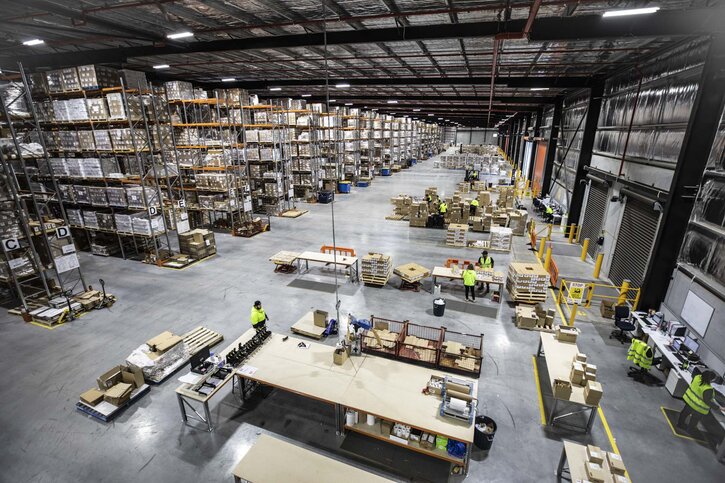
We’re now focusing on the latest trend of digitalization to create a better customer experience, with partners around the world that are integrated in our 4PL platform ARRIV. The key is integration. In the past, there have been pieces of information transferred through various systems and there were a lot of redundancies. Just using the postal technology is not enough for us to fulfill that efficiency that customers demand. Customer behavior has significantly changed, and the behavior of logistics providers has changed. They want more transparency and visibility, demanding lower costs to serve their customers but at the same time requiring us to provide more accurate milestones along the delivery supply chain, so a technology reboot is fundamental to the success and the future of our business model.
We launched the 4PL platform ARRIV in late 2023, which has allowed us to start inputting a lot of the functionalities that customers are demanding through a phased approach. We are also able to strengthen that partnership network through the connectivity enabled by the digital platform. The overarching goal is to achieve operational excellence with connectivity, better customer experience and better visibility.
We also have key priorities to enter markets outside of Asia, and the 4PL platform will allow us to leverage our extensive partnerships to connect the dots and grow the ecosystem that we’re creating with that. The platform allows us to fundamentally change the way that we do business.
Which markets are you focusing on outside of Asia?
We are already operating very mature commercial lanes for Asia-Pacific exports to the USA, Latin America and Europe, but Asia-Pacific is our home court, especially Southeast Asia, and we are forging a very close alliance with the ASEAN logistics and postal operators. We also have a big subsidiary established in Australia – these two home markets form the fundamental foundation of the current business model.
We have always been very close to the UK/EU market and leveraging our postal licenses in the UK, Belgium and the Netherlands allows us to act on behalf of many service providers. There is a lot of work being done already in those key areas, but the Middle East is an area where we’re looking for a key partnership and we already started the groundwork last year. There are lots of things to prioritize but our ambition is to grow beyond Asia, focus on Australia and Singapore as our two home markets, but continuously grow the UK/EU market while putting in the Middle East as the part that can connect all the other dots.
How is the changing e-commerce market and the move to consumer-to-consumer influencing your business decisions?
We have been looking to the B2B and B2C markets and most of our volumes are flowing through the B2C channel today. We are creating fulfillment channels through the supply chain management side to fulfill B2B and B2C demands, and that is the model we’re running using our 4PL platform – and will continue to do. Certainly, we’re seeing a very interesting trend in consumer-to-consumer (C2C) as well, but I would say whether its B2C or C2C, leveraging the right last-mile service providers and adopting the right technologies to serve all customers will be the key to success.
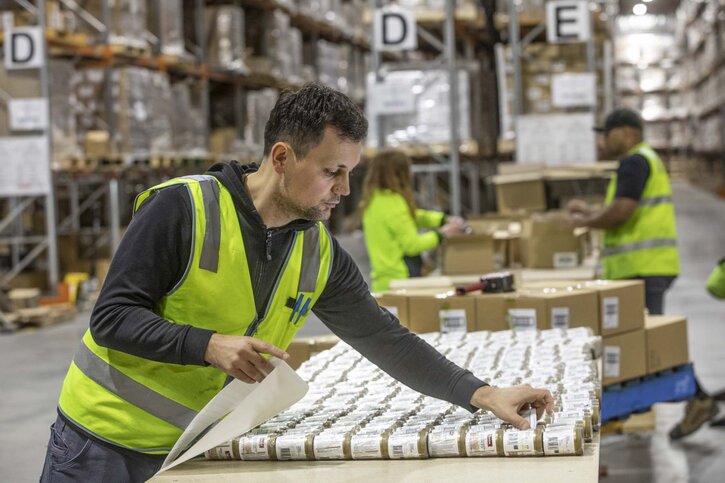
Another piece will be around how to manage returns for those C2C customers as it becomes a much stronger market in Asia-Pacific, and how to be sustainable in the long run. No matter the approach, you need to have an alternative delivery model to give end customers a way to make their own decisions on how they want the last mile to be delivered, and also give them the option for easy returns management – these will be the two key success factors. If the focus remains on e-commerce, the demand for B2C or C2C will ultimately be fulfilled by the technology enablers.
Tell us some more about your partnerships with Shein and Lazada – why are these businesses of interest to SingPost?
It is interesting to see the acceleration of the likes of Shein to boost volumes in the retail fast fashion industry. The partnership with them in Singapore allows us to provide them with new ways of completing end-to-end e-commerce last-mile logistics and allows us to introduce the cross-border service to Shein.
In many of our partnerships, we’re working with our clients to see if we can complete the picture of end-to-end for cross-border. We’re also hoping to offer them more value-added services such as customs clearance, last-mile fulfillment and returns management, so it is interesting to witness and we’re excited about their journey with us.
For Lazada, we have been working with them on the cross-border piece and last-mile delivery, so the MoU we signed with them at the end of 2022 was to empower the adoption of carbon-efficient delivery options by consumers, small businesses, marketplace sellers and entrepreneurs. Our goal is to help reduce the environmental impact of the first mile, last mile and reverse logistics [see Lazada agreement at the end of this article].
How else are you boosting sustainability at SingPost?
As a group, we have a very aggressive target. We are aiming for net zero for Scope 1 and 2 operations in Singapore by 2030, and net zero for Scope 1, 2 and 3 globally by 2050. The current approach is mainly to optimize operational efficiency, minimize wastage and adopt renewable energy. To date, SingPost has converted about 32% of our owned delivery fleet to electric vehicles. We have a target to switch all our fleet in Singapore to electric vehicles by 2026 and we are also working on imposing internal carbon pricing to influence the investment decisions in the future, so all our business decisions for capex investment will require a stringent sustainability standard to be met.
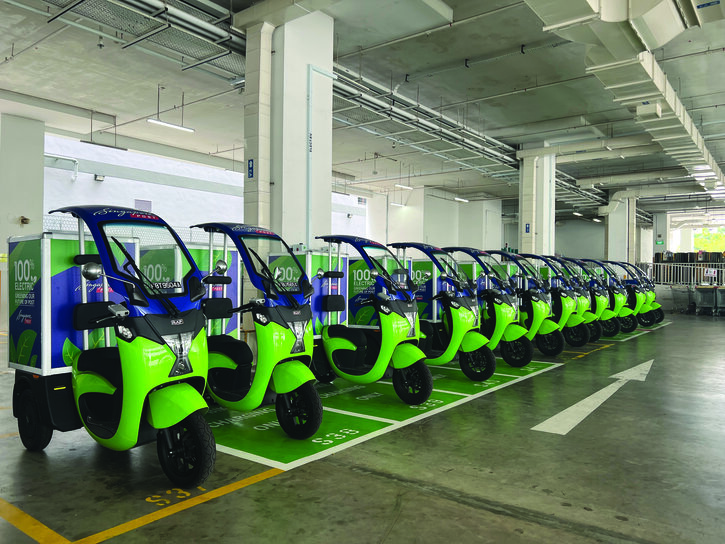
Overall, the idea of sustainable operations is in our DNA. Using the 4PL system, we are rolling out the opportunity for all our customers to choose routing options by providing them with the most carbon-footprint-friendly route alongside the most cost-efficient and fast routing options. This will allow customers to dynamically calculate the carbon footprint if they choose that route using that vendor – so this is a digital way for us to calculate the carbon impact of the overall end-to-end supply chain and enable users to see the data and manage their delivery decisions themselves.
How will you ensure the success of SingPost in the longer term?
The technology piece is the most important – it is the future. We are investing a significant amount of resources and time in developing the next stage of technology platforms. We’re leveraging AI to support us on efficiency, to create more productive forecasts of customer demands and to improve customer service. That will be a continual emphasis for investments in our business.
The second piece is the talent – continuous investment and developments of our people through our digital upskilling initiative [see Digital development below]. Getting our people up to speed on the digital future is going to be another key initiative driving the business forward.
Digital development
In February 2023, SingPost launched a digital upskilling initiative for all Singapore-based employees to encourage the growth, development and implementation of key digital skills that support the organization’s digital transformation journey. Useful digital tools and features were showcased as part of this initiative, including key functionalities across relevant applications and digital learning programs and resources.
To promote adoption and reinforce change within the business units, 20 digital champions were recruited across various departments at SingPost. The champions undertook digital training workshops to better understand use cases and scenarios in which applications can be deployed to increase effectiveness and efficiency in work processes. They also learned how to curate the use cases and scenarios into best practices and work with users in their departments to adopt them.
This is an ongoing skill upgrading program at SingPost that seeks to enhance employees’ proficiency in services and projects in their respective lines of work.
Lazada agreement
SingPost and Lazada Singapore signed a memorandum of understanding (MoU) in December 2022 to encourage the adoption of carbon-efficient delivery options, with Lazada merchants and consumers able to use SingPost’s eco-friendly first-mile, last-mile and reverse options from April 2023.
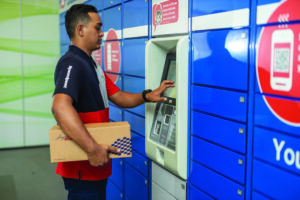
SingPost offers a comprehensive suite of carbon-efficient first-mile options, such as the POPDrop automated self-service drop-off box fitted with in-built trackability and RFID technology that will enable merchants to ship with end-to-end tracking capabilities. The POPDrop, together with the existing network of POPStations (pictured right), can be used by Lazada’s merchants and customers for their shipping and return needs and is more carbon-efficient than doorstep collection.
Letterbox, POPStation and Parcel Santa locker delivery options have been made more readily available, giving Lazada sellers access to more drop-off points to deposit e-commerce parcels and offering consumers more choices to collect parcels at their convenience.
This article was originally published in the March 2024 issue of Parcel and Postal Technology International – click here to read now!


